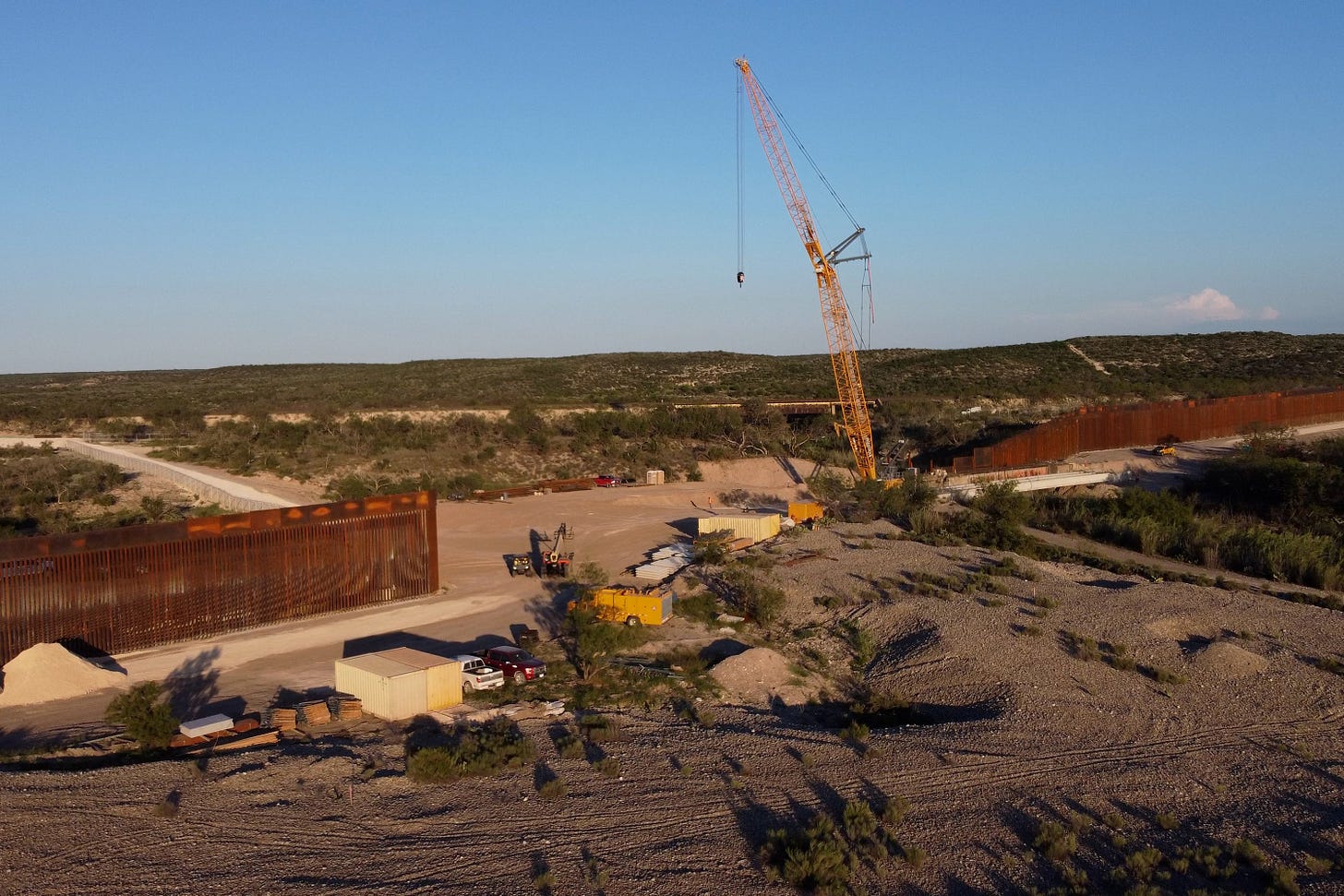🛑🏜️ Texas' Border Wall Efforts Hampered by Landowner Resistance and Fragmented Construction
The project’s rising costs, at $17 to $41 million per mile, and difficulties in land acquisition have raised questions about the long-term effectiveness of the wall in controlling border crossings.

🛑🏜️ Texas' Border Wall Efforts Hampered by Landowner Resistance and Fragmented Construction
Zach Despart, Yuriko Shumaker, and Uriel Garcia, The Texas Tribune.- Texas’ ambitious border wall project, originally touted by Governor Greg Abbott as a comprehensive solution to illegal immigration, has been hindered by significant landowner resistance and logistical challenges. The state has only constructed 50 miles of wall, a fraction of its goal of 805 miles. As many as one-third of landowners have refused to allow construction on their properties, forcing the state to build on remote ranchlands and leaving gaps in the barrier. While the state has focused on rural areas, border security experts argue that more strategic construction in urban centers is necessary to prevent migrants from escaping into safe houses. The project’s rising costs, at $17 to $41 million per mile, and difficulties in land acquisition have raised questions about the long-term effectiveness of the wall in controlling border crossings.
Here’s a list of key insights and figures from the Texas Tribune’s story:
Texas Border Wall Project:
Texas has constructed 50 miles of its planned 805-mile border wall, making up 6% of the total goal.
The wall is built in fragmented sections across six counties. Some sections are as narrow as a city block, and others are more than 70 miles apart.
Land acquisition issues are a significant hurdle. The state cannot proceed with construction in areas where landowners have not agreed to allow it.
Landowner Resistance:
One-third of landowners approached by the state have refused to participate in the project.
The state has acquired land for 15 miles of the wall, but many sections remain without agreements.
Land acquisition costs have risen significantly, with the cost per mile for land access increasing from $177,000 per mile in 2022 to $322,000 per mile in 2024.
Costs:
The construction cost for each mile of the wall varies between $17 million and $41 million per mile, depending on the terrain.
So far, $3.1 billion has been spent on the wall project, with future funding requested for additional miles.
Construction Challenges:
Wall construction has primarily focused on rural ranchland rather than urban areas with more illegal crossings.
The current approach has been more about securing land availability than building strategically where it would be most effective.
Government Perspective:
Governor Greg Abbott and officials have emphasized the wall’s role in preventing illegal crossings, particularly in rural areas where migrants may be trying to avoid detection.
Mike Banks, Texas Border Czar, asserts that the state wall helps control areas with fewer resources and can lead to more effective law enforcement.
The state has secured 94 land agreements, with less than one-third of these agreements in 20 of the most populous border cities.
Landowner Experiences:
Some landowners, like Raul and Maria Gaona, have refused offers due to concerns about privacy and land disruption, rejecting an offer of $9,000 for a strip of their land.
Stuart Stedman, a large ranch owner, agreed to a $1.5 million deal for a section of wall on his land. He cited more straightforward dealings with the state than with the federal government.
El Cenizo has seen resistance. Landowners like Julio Rodriguez accept payments of $81,600 for building on their land, but others oppose it, viewing the wall as unnecessary for their safety.
Political and Legal Context:
The state’s use of eminent domain is prohibited for the wall by the Texas Legislature, making landowner consent crucial.
Senator Brandon Creighton has filed a bill for the next legislative session to allow eminent domain to expedite the process.
The state plans to complete 100 miles of the wall by 2026.
These insights and figures highlight the ongoing challenges, costs, and political dynamics surrounding the Texas border wall project.



